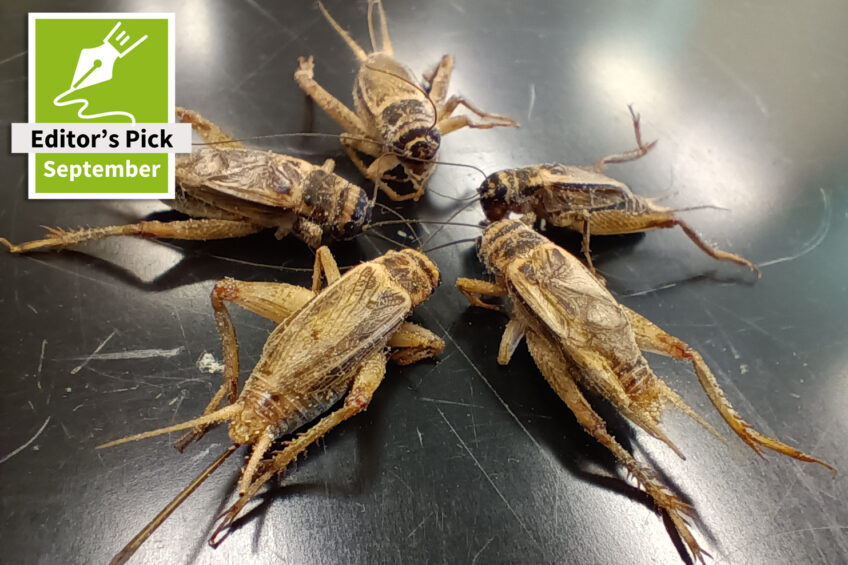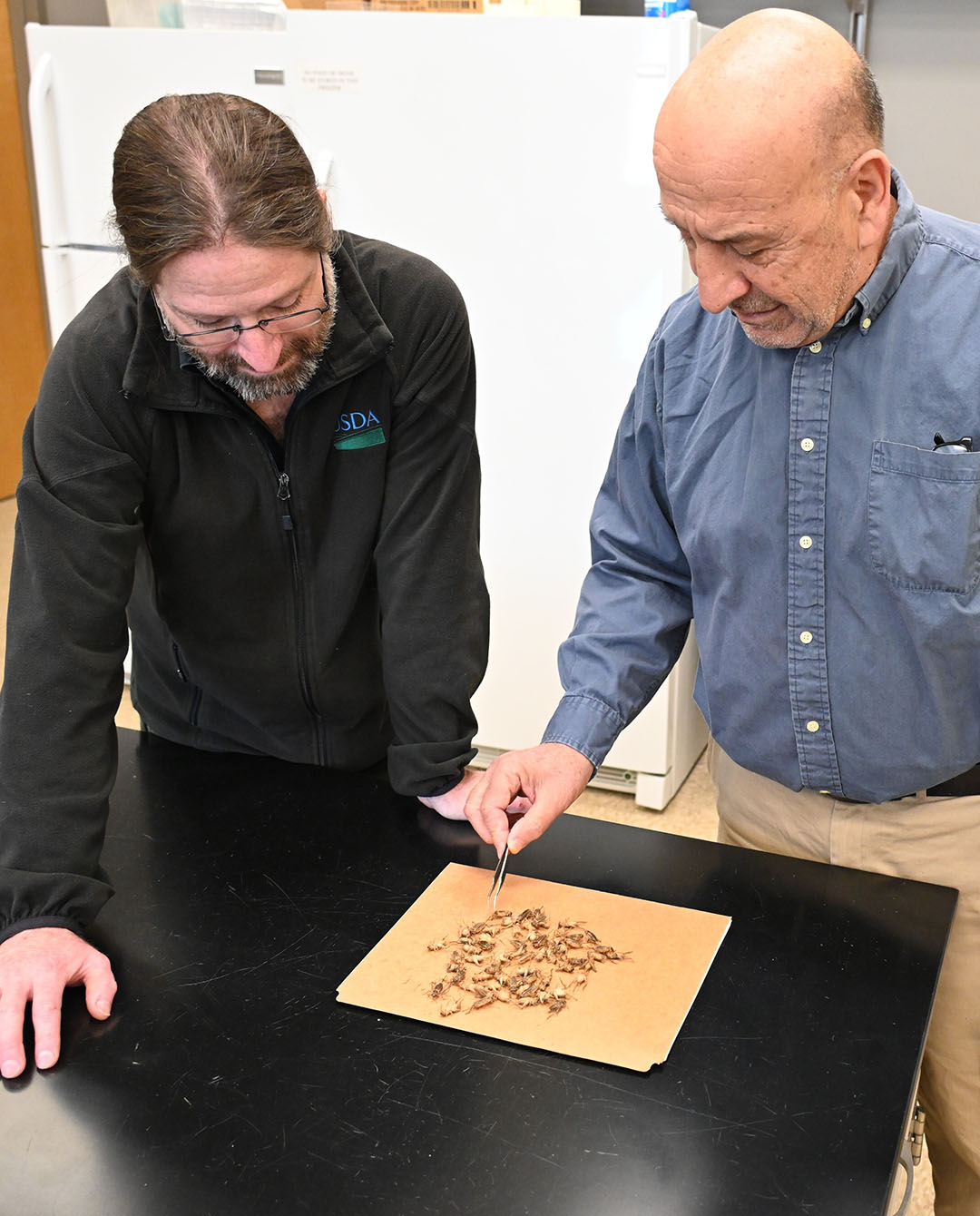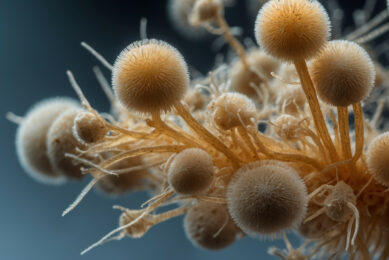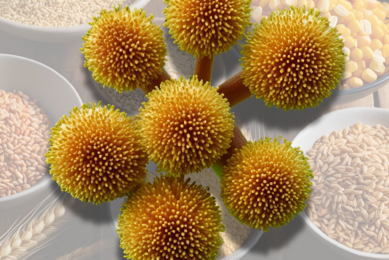Part 2: Natural Mitigation of Mycotoxins – are insects a true game-changer?

Insects are a good source of protein, need little energy for production and can be fed a variety of waste products. But what if there was a way to make their production much more valuable in the livestock feed industry?
Studies: Insects impact on mycotoxins
In March 2024 for example, at Wageningen University in the Netherlands, Kelly Niermans presented her doctoral dissertation on the enzymes produced by HL and BSFL that effectively biotransform mycotoxins into harmless molecules. She found that mycotoxin accumulation did not occur in black soldier fly and housefly larvae reared on mycotoxin-contaminated substrates, a finding which “opens economically interesting opportunities by repurposing otherwise unsuitable substrates as feed for insects and the reared insects as feed for livestock and possibly for human consumption.”
This follows other studies conducted in Wageningen where some of her colleagues found that aflatoxin B1 did not affect survival or body weight in BSFL and YMWL, indicating a high tolerance and no accumulation in both species. “Aflatoxin B1 and aflatoxin M1 were below the detection limit (0.10 µg/kg) in BSFL, whereas the YMWL had aflatoxin B1 levels that were approximately 10% of the European Union’s legal limit for feed materials and excreted aflatoxin M1.”
Some of the same researchers later examined enzyme metabolism pathways in BSFL, noting that about 60% of aflatoxin B1 was converted to other metabolites in these larvae. (Note that insects can mitigate mycotoxins in their feed substrate by metabolising them with enzymes or excreting them in their waste, called frass, which is typically collected and sold as a soil amendment, providing another circular benefit to insect production for feed and food.)
Another study in Austria found that neither mycotoxins nor pesticides were accumulated in BSFL tissue nor significantly affected growth compared to insects fed a substrate with no mycotoxin content.
In mid-2023, a research review of studies pertaining to pesticides and mycotoxins in BSFL was published. The authors concluded that no bioaccumulation was detected for any of the target substances. “In addition, dioxins, PCBs, PAHs (polycyclic aromatic hydrocarbons, a natural chemical found in coal, oil and petrol) and pharmaceuticals did not accumulate in BSFL in the few existing studies. However, future studies are needed to assess the long-term effects of the aforementioned undesired substances … to develop appropriate waste [frass] management technology.”
In a previous review of 54 insect mycotoxin mitigation studies covering 32 insect species, Niermans and her colleagues noted that mycotoxins are generally metabolised within the insect body, with how much depending on the particular mycotoxin and insect species. They also noted that researchers have found that the effect of mycotoxins on larval growth and survival are less detrimental in later larval stages.

Cricket research promising
Ryan Paulk, a Biological Science Technician at the US Department of Agriculture (USDA) Agricultural Research Service in Stoneville, Mississippi, has just finished a study of mycotoxin mitigation in crickets and found different results with regards to where mycotoxins end up. “During my undergrad studies, I was interested in how insects sequester toxins and, when I was hired at USDA, I was introduced to Dr Hamed Abbas, a Research Plant Pathologist who specialises in mycotoxin research,” says Paulk. “There have already been some BSFL and YMWL studies showing how they can feed on mycotoxin-infested grain and mitigate them, and I wanted to see what happens with crickets. We know that insects such as crickets and beetles can feed on mouldy crops in the field or in storage, but are they storing the toxins in their fat or metabolising it?” In their recently-published study, Paulk and his colleagues reared small colonies of 2nd instar A. domesticus crickets to 5th instar adults on nutrient-optimised maize-based diets treated with four levels of fumonisin B1, ranging from 0 to 20 ppm. After feeding on the treatments for 34 days, they found no significant differences in mortality or growth rate between any of the treatment groups. As to whether crickets are storing this toxin in their fat or metabolising it, “it seems that it’s neither, that it’s mostly excreted,” says Paulk. Specifically, Paulk found the cricket frass in his study contained about 85-95% of the original fumonisin mycotoxin. Regarding use of the frass, Paulk notes that “if you spread that on cropland, I would think microbes in the soil would degrade toxins or in the case of fumonisin UV degrades it. “I am not aware of mycotoxins in the soil that have any negative effect on crop plants anyway, if absorbed by them through root uptake.”
Metabolism common
Returning to the findings that other insects of interest for livestock feed (BSFL and YMWL) metabolise mycotoxins, research is ongoing and progress is being made. Paulk notes that “Dr Heather Jordan at the University of Mississippi is researching whether it’s enzymes in the gut of insects or microbes in the gut that are breaking down mycotoxins.” In their study review, Niermans and her colleagues from Wageningen University note that past research shows that cytochrome P450s are the main family of enzymes involved in biotransformation of mycotoxins in some insect species.
Great potential
Overall, Niermans and her colleagues found in their review that past research results “support an optimistic outlook for the use of mycotoxin-contaminated waste streams as a substrate for insect rearing.” For his part, Paulk is keen to continue research in this area. With his colleagues (and perhaps as the basis for a graduate degree), he hopes to study aflatoxin mitigation using crickets, and also study cricket and other insects with moniliformin, DON and other toxins found in maize and wheat. “I believe there is great potential to use insects to mitigate mycotoxins,” he says. “Economically, it’s very attractive to do this compared to using binders, and by feeding mycotoxin-containing low-quality grain to insects, you are converting low-quality crop material that is toxic when fed to livestock in large amounts into a mycotoxin-free, high-protein, high-value feed ingredient. You are eliminating mycotoxins from grain in a natural and cost-effective way, and getting a high-quality feed product as part of the bargain.” He adds, “The cost of insect feed ingredients may not be very competitive now but, as production scales up, it’s likely to be very competitive in the future.”
In Part 1 of Natural Mitigation of Mycotoxins we looked at the growing options and opportunities











